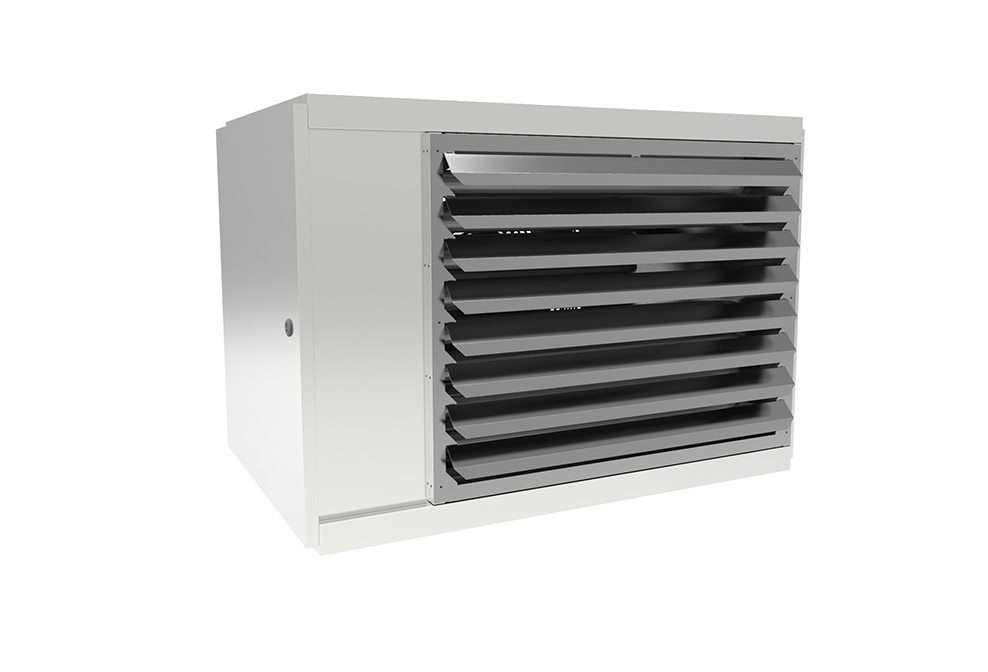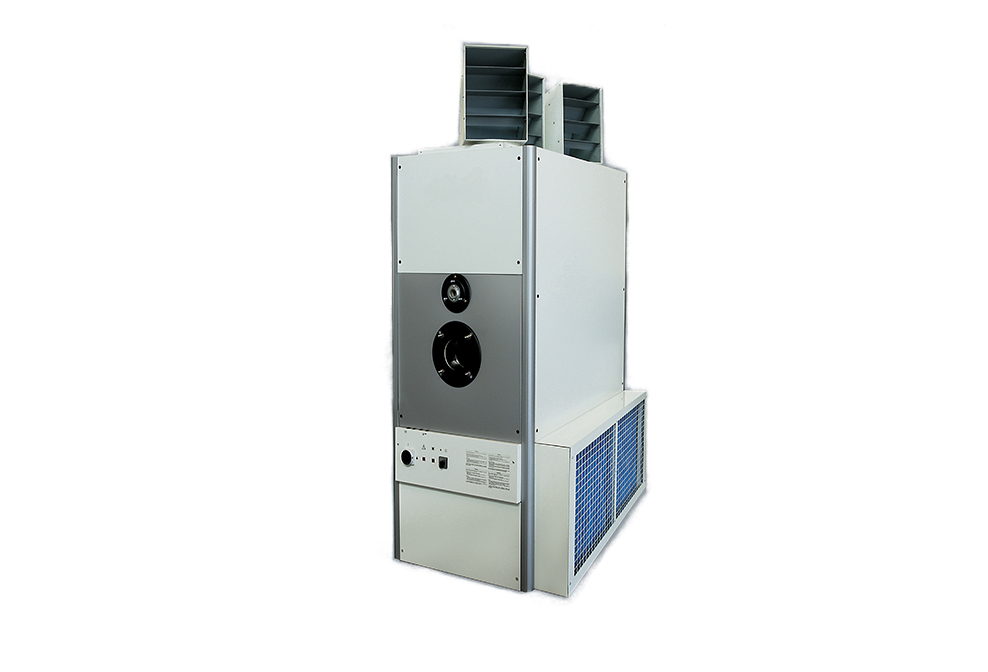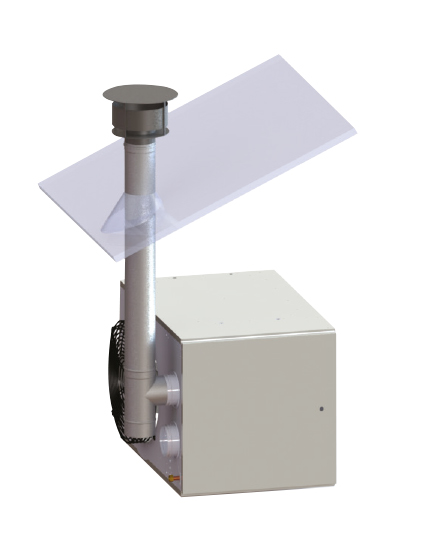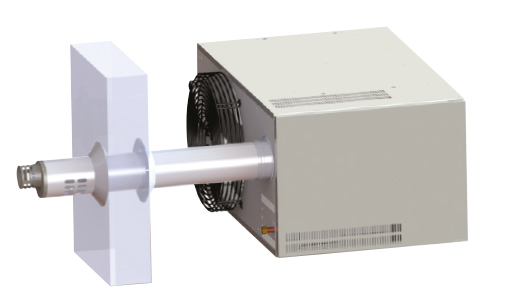If you’re looking for a Workshop Heater, then Flexiheat UK have a variety of solutions for you. In this article, we will go through our products and their suitability for workshop heating.
Firstly we will look at Gas Heaters, and their options –
Natural Gas Unit Heaters or sometimes referred to as a Fan Forced heater (which are also available in Propane Gas or LPG) for your Workshop or Garage
Natural Gas unit heaters burn fuel in a heat exchanger to produce heat. Natural gas unit heaters are very typical in populated areas that have natural gas piped throughout the area, been so called “on the grid”. Propane (LPG) unit heaters in general, are used in rural areas where natural gas is not available.
Operating Principle:
When there is a need for heating, the fuel from your natural gas line or propane (LPG) tank flows through a gas valve inside the unit heater. A spark or pilot flame ignites the fuel and a flame is produced inside a heat exchanger. When the heat exchanger reaches a pre-determined temperature, a fan turns on which blows space air through the warm heat exchanger. The air entering the heat exchanger absorbs the heat from the heat exchanger, culminating in a warmer discharge air temperature. As the fuel is burned, by-products of combustion leave the unit heater through a vent pipe also called a chimney or flue pipe
Common Gas or Propane (LPG) Unit Heaters Used in Garages and Workshops
Advantages of gas or propane unit heaters in garages or workshops:
- Efficient.
- Produces heat in a powerful and self-contained way. Not reliant on a centralised boiler to supply heat.
- Low clearance requirements on low profile units.
- Most units are fitted with adjustable louvres to help direct warm air into areas that you need it most.
- Strong & Durable. All unit casings are treated for corrosion resistance and finished with a baked-on, high solid paint.
- Broad range of sizes and styles to match the heater to your heating load. If selected correctly, you don’t have to be concerned about under or over sizing.
- The fan can run in the summer without heat to help circulate air.
- Natural gas units are ready for immediately use. You don’t need to be concerned about refuelling your supply.
Disadvantages of gas or propane unit heaters in workshops or garages:
- By-products of combustion require special attention. If the heater is not flued properly, dangerous fumes can enter your garage or workshop.
- The necessary clearance requirements must be met. A flame is present. You must be sure flammable materials (fixed or airborne) stay away from the unit heater.
- Dirty, dusty or corrosive atmospheres require special attention.
- Fan forced units move large volumes of air which can kick up dust in your garage or workshop.
Workshop heater Unit Configurations:
Gas & Propane heating units for workshops & garages blow air in a horizontal direction into the space. Adjustable louvres allow for vertical adjustment of airflow. Most major manufacturers also offer horizontal louvres that allow for side-to-side adjustment of airflow. Natural gas and propane unit heaters for garages and workshops can be broken down into several categories based on the venting type and heat exchanger design:
Flue Types:
Natural draught
Due to its low cost and compact design, natural draught unit heaters are a good choice for some workshop heating. The term natural draught refers to a heater that vents naturally, without the assistance of a fan. A natural draught heater uses the air in the garage or workshop for combustion. The products of combustion rise out of the unit heater through a flue pipe to the outdoors. A natural draught workshop heater is the least expensive style, due to the often lower flueing costs; however, you must ensure the following conditions exist:
1) Your workshop or garage cannot be under a negative pressure. If your space is negative, the products of combustion will not vent properly and you will experience nuisance tripping from a safety switch that detects a blocked flue vent. Negative pressures occur when air is being exhausted from a space without any source of make-up air or combustion air as it’s most commonly known.
2) Specific flue pipe routing is required. Natural draught warm air heaters function on the principle that hot air rises. Vertical flueing through the roof of your garage or workshop is preferred. Horizontal flueing is much more difficult. Flueing through a roof can become more expensive since you need to completely weatherproof the hole in the roof. The manufacturer’s detailed installation instructions must be adhered to thoroughly.
3) Since the air inside the heated space is being used for combustion, it is essential that the atmosphere is clean. If you are comfortable lighting a match in your workshop or garage, then you should feel comfortable about running a natural draught flued workshop heater in your space. If there are any flammable dusts (woodworking shops) or fumes in your workshop or garage, select a separated combustion design which is explained below.
Natural Draught Workshop Heater- flue pipe connects to the warm air heater at the rear of the unit
Fan assisted or Powered flue Workshop Heater
A fan assisted or powered flue warm air workshop heater unit is comparable to a natural draught heater with the addition of an integral flue vent booster fan .On a call for heat, the booster fan turns on to ensure the products of combustion will be flued correctly. Fan assisted heater units are the most common and popular type of gas and propane heating units for workshops & garages and a booster fan permits greater flexibility with flue pipe routing. Horizontal flueing is very straightforward. In a workshop or garage, most flueing is done through a sidewall to avoid costly roof modifications. Many of the major manufacturers are phasing out gravity flued units and are replacing them with power vented units as standard
Power Vented Unit-flue pipe connects to a flue booster fan
Room Sealed Workshop Heater
Room sealed workshop heaters are ever increasing in popularity. Whereas the traditional natural draught & fan assisted heaters utilise the space air for combustion, Room sealed workshop heaters are sealed from the space. Room Sealed warm air unit heaters for workshops & garages have 2 flue pipes. One flue pipe draws in air from the outside and one flue pipe removes the products of combustion back outside. This sealed combustion design eradicates your concerns about burning the air in your space. Room Sealed unit heaters are essential in a woodworking shop, for example, where fine dust can ignite with an open flame. Room Sealed unit heaters are also slightly more efficient since they do not use the heated air in your space for combustion.
Most manufacturers will offer a concentric flue kit that allows you to only penetrate your roof or wall once. This results in obtaining a greater efficiency from you warm air heater as the warm flue exhaust gases preheats the cold external combustion air.
Workshop Heater -Heat Exchanger Designs:
Traditionally, a workshop heater or garage heater where tall and narrow. Most manufacturers are moving towards the newer tubular heat exchanger design. Tubular heat exchanges are more flexible, durable and resist cracking over time. This design also allows the unit to be wider and shorter which is necessary for most garages and workshops that do not have ample overhead clearance to fit the heaters
Standard natural gas and propane workshop heaters come with aluminium steel heat exchangers. Aluminium steel is more than adequate for typical workshop & garage installations. The life expectancy for a workshop heater in a clean environment is 20+ years. If your application involves mildly corrosive atmospheres & high humidity levels, your natural gas or propane garage heating unit will last considerably longer if you upgrade to a stainless steel heat exchanger.
Workshop Heater – Options and Accessories:
A workshop heater can have several options and accessories to help meet your specific requirements and needs. High volume fans, 2 stage burning units, wall mounted thermostats, air deflectors and flue caps are very common accessories used in workshop and garage heating. If you are not sure what to order, speak to our dedicated sales team who will recommend a unit to meet your specific needs.
Installation Overview:
1) Warm Air Workshop Heaters can either be suspended from the ceiling or mounted directly to the wall. Flexiheat can offer suitable brackets for either option. Or we do a floor mounted version
2) Install the natural gas or propane (LPG) pipe work
3) Install flue pipe.
4) Wire a low voltage wall thermostat to the heater.
5) Wire power to the warm air heater as it is required to operate the heater. This is usually 240 volt power in workshops & garages
Should you require anymore assistance or information on our workshop heater ranges , please don’t hesitate to contact our sales team on 01202 822221 or click here for our email contact form






